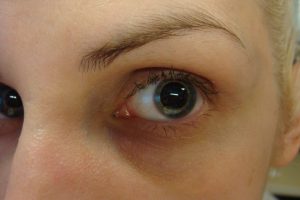This is a one-day workshop hosted by the University of Kent, as a collaboration between the Centre for the Interdisciplinary Study of Reproduction (CISoR), the Centre for Parenting Culture Studies (CPCS) and the British Pregnancy Advisory Service.
Thursday 29th June 2017
Ground Floor, Cornwallis East Building, University of Kent, Canterbury
Organisers: Dr Ellie Lee (SSPSSR) and Professor Sally Sheldon (Kent Law School), University of Kent
This event is one of a number taking place during 2017, the year of the 50th Anniversary of the 1967 Abortion Act. In common with other events, its aim is to promote critical reflection about this legislation. In the academic literature, one widely commented-on feature of the British abortion law is its ‘medicalisation’; that is, the centrality given by law to medical opinion in deciding on access to abortion procedures. While this feature of the abortion legislation has generated a great deal of academic analysis and discussion in the disciplines of law, ethics and sociology, research and discussion about the opinions and experiences of doctors themselves is notably, and curiously, absent from research. The main purpose of this event is to place ‘medical opinion’, as it operates in practice at the centre of a discussion about abortion provision.
The programme takes ‘conscience’ as its core theme. Part of the discussion will consider conscientious objection; its place in abortion legislation (in the 1967 Abortion Act, and in legislation in other jurisdictions) and the issues raised by its invocation by doctors as they ‘opt out’ of abortion provision. In addition to this consideration of ‘doctors who don’t’, however, we will also focus on ‘doctors who do’ through discussion about research that considers the experience of doctors who work to provide abortions.
- What does this work suggest about the relation between the law, and the practice of abortion provision?
- How do doctors who provide abortion think about the work they do and its place as part of medical care?
- What tensions and difficulties mark the present relation between a now 50 year old law and the experience of those legally obliged to make ‘good faith opinions’ about access to abortion?
The day will begin with a presentation by Professor Sally Sheldon about the history of medical opinion in the development of British Abortion law, based on work for the project ‘The Abortion Act: A Biography’. The programme includes discussion about research considering abortion provision in England based on new research led by Dr Ellie Lee, but we will also widen the lens and benefit from a comparative focus. We are delighted to be able to include Dr Lori Freedman and Professor Wendy Chavkin from the US as presenters.
The day is also designed to encourage participation from Postgraduate Researchers with an interest in any aspect of the provision of abortion and contraception. Postgraduate students are invited to contribute Poster Presentations to run alongside the main programme. This part of the day is organised by Verity Pooke (PhD Candidate, University of Kent, vp238@kent.ac.uk).
- Book a place for the event. The event is free to attend but places are limited.
- View workshop programme
- View call for posters (PDF)
Participants
Jennie Bristow, Senior Lecturer in Sociology, Canterbury Christ Church University
Wendy Chavkin, Professor Emerita Population and Family Health and Obstetrics and Gynecology
Sylvia De Zordo, Senior Researcher, ERC Starting Grant and Ramón y Cajal Fellow, University of Barcelona, Dept. of Anthropology
Lori Freedman, Assistant Professor, Department of Obstetrics, Gynecology & Reproductive Sciences, Bixby Center for Global Reproductive Health, University of California
Ann Furedi, CEO British Pregnancy Advisory Service
Kate Greasley, Lecturer in Law University College London
Lesley Hoggart, Senior Lecturer in the Faculty of Health and Social Care at the Open University
Ellie Lee, Director, Centre for Parenting Culture Studies, University of Kent
Patricia Lohr, Medical Director, British Pregnancy Advisory Service
Joanna Mishtal, Associate Professor, Cultural/Medical Anthropology, University of Central Florida
Mary Neal, Senior Lecturer in Law, University of Strathclyde
Malcolm Potts, Bixby Chair, Professor in Population and Family Planning, University of California
Sally Sheldon, Professor of Medical Law, University of Kent
Christy Zink, Assistant Professor, University Writing Program, The George Washington University







